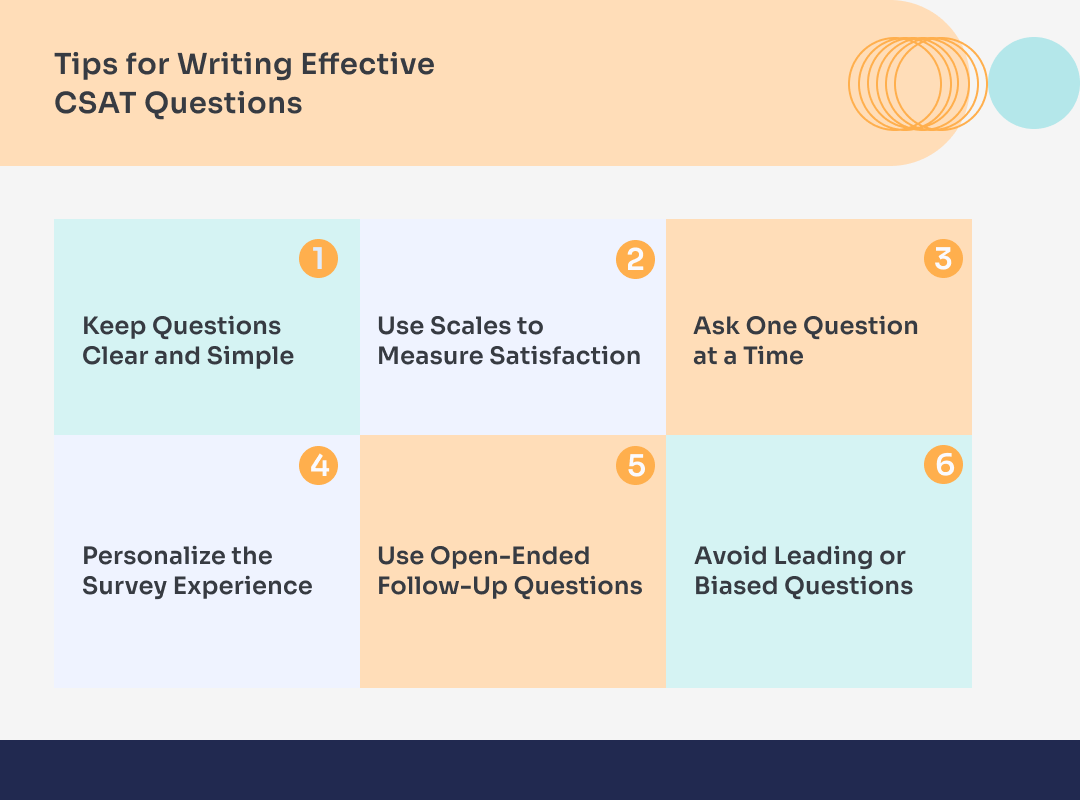Customer satisfaction: it’s the silent powerhouse behind every thriving business. If you’re wondering how to calculate CSAT (Customer Satisfaction Score) and why it matters, you’re already on the right track to transforming customer experiences.
A simple number can hold the key to unlocking loyalty, retention, and real-time feedback that drives growth. Understanding how to calculate CSAT is not just a technical skill—it’s your gateway to understanding your customers better than ever before.
In this blog, we’ll explore exactly how to calculate CSAT, why it’s essential to your customer support strategy, and how interpreting your CSAT results can give you actionable insights. With a clear grasp of your customer satisfaction levels, you can fine-tune your services, respond swiftly to pain points, and create strategies that enhance customer loyalty. We’ll walk you through how to calculate CSAT formula and how it fits into a broader customer experience plan, helping you boost satisfaction and retention.
What is CSAT?
CSAT, or Customer Satisfaction Score, is a metric used to gauge how satisfied customers are with a specific product, service, or interaction. It is typically measured through a short survey following a customer’s experience, asking them to rate their satisfaction on a scale from 1 to 5 or 1 to 10.
This score directly reflects the customer’s feelings after an engagement, offering valuable insight into their immediate level of contentment. Unlike broader metrics like Net Promoter Score (NPS), CSAT focuses specifically on satisfaction tied to a particular interaction, making it highly effective for understanding short-term customer sentiment.
The importance of CSAT lies in its ability to capture real-time feedback on customer experiences, allowing businesses to assess the effectiveness of their services and products quickly.
A high CSAT score signals that customers are satisfied with their experience, which can correlate with repeat business, positive word-of-mouth, and customer loyalty. On the other hand, a low CSAT score serves as a red flag for areas of improvement, helping businesses take corrective action before customer dissatisfaction leads to churn. Knowing how to calculate CSAT score accurately is essential for translating this feedback into actionable insights.
Many businesses, especially in customer-centric industries, heavily rely on CSAT to maintain high levels of customer satisfaction. E-commerce platforms, customer service teams, SaaS companies, and hospitality businesses all use CSAT as a core metric to assess performance.
For example, an online retailer may measure CSAT after product delivery to gauge the customer’s experience with shipping and packaging, while a SaaS company may assess CSAT after a support interaction to ensure that customers are satisfied with their troubleshooting experience.
How to Calculate CSAT
How to calculate the CSAT formula, you need to focus on measuring customer satisfaction with a specific interaction or product experience. The basic formula is simple:
CSAT = (Number of Satisfied Customers / Total Survey Responses) x 100
In this formula, “satisfied customers” refers to those who rate their experience positively, often defined as the “very satisfied” or “satisfied” responses. You then divide this number by the total number of responses to get the percentage of satisfied customers, reflecting how well your company is meeting customer expectations.
Example CSAT Calculation:
- Suppose you send out a survey to 100 customers, and you receive 60 responses.
- Of the 60 responses, 40 customers rate their experience as either “satisfied” or “very satisfied.”
- Using the CSAT calculation formula, you divide 40 by 60, then multiply by 100.
CSAT = (40 / 60) x 100 = 66.7%
This means 66.7% of the customers who responded were satisfied with their experience.
Key Metrics to Consider:
- Survey scale: The scale used (e.g., 1-5 or 1-10) directly impacts the results. A 1-5 scale is common, with a 4 or 5 being considered “satisfied,” while a 1-10 scale gives a broader range of responses, allowing for more granular insights.
- Response rate: The more responses you collect, the more reliable your CSAT formula will be.
how to calculate CSAT may seem straightforward, many companies revert to using Customer Satisfaction (CSAT) Survey Software to ensure accuracy and efficiency. These software solutions automate the entire process, from survey distribution to data analysis, making it easier to handle large volumes of responses.
In 2024, the CSAT software market was valued at USD 1.2 billion and is projected to reach USD 2.5 billion by 2033, growing at a compound annual growth rate (CAGR) of 8.9% from 2026 to 2033. This growing demand highlights how businesses are increasingly relying on technology to simplify how to calculate CSAT and gain valuable insights that can drive improvements in customer satisfaction and loyalty.
When and How to Collect CSAT Data
Collecting CSAT data at the right time and using the most effective methods is key to gathering actionable insights. Knowing how to calculate CSAT accurately relies not only on having the right survey format but also on ensuring the data you collect is timely and relevant. The timing of your surveys greatly impacts the quality and effectiveness of the feedback.
Best Practices for Survey Timing
Timing plays a crucial role in ensuring that your CSAT calculation is meaningful. Below are the best practices for when to collect data:
Post-Interaction
- Immediately following customer support interactions, whether through phone, email, or live chat, ask customers to rate their experience. This allows you to measure customer satisfaction while the interaction is still fresh in their minds. This is a common practice when calculating CSAT scores to understand the effectiveness of your team.
Post-Delivery
- After customers receive their product or service, ask them to provide feedback. This gives you insight into how satisfied they are with both the product quality and the delivery process. This is also a great way to assess what is a good CSAT score for your delivery service.
Post-Purchase
- After a customer completes a purchase, send a CSAT survey to gauge their satisfaction with the shopping experience. If your customers consistently rate their experience highly, it’s an indication that you’re meeting or exceeding their expectations.
Post-Update or Feature Launch
- If your product or service undergoes updates or new features, collecting feedback soon after helps you understand customer reactions and satisfaction with the changes. This feedback is crucial for how to calculate CSAT and determining if the updates align with customer needs.
Recommended Survey Distribution Methods
The method of distributing your CSAT surveys is just as important as timing. Each distribution channel has its strengths when it comes to gathering meaningful feedback.
- Email surveys provide space for more detailed questions, making it ideal for in-depth feedback. After an interaction, sending an email with a simple CSAT scale helps customers reflect on the experience and provides you with valuable data for calculating CSAT scores.
Chatbot
- Integrated chatbots can collect CSAT data immediately after a customer support conversation. This real-time feedback allows you to analyze how effective your support team was in resolving issues. Chatbots are a fast, automated way to capture how to calculate CSAT with quick ratings.
SMS
- For quick, on-the-go feedback, SMS surveys can deliver instant CSAT results. With a high open rate, text surveys are a great option for collecting quick, accurate responses and getting a better sense of what is a good CSAT score from a broader audience.
Tips for Writing Effective CSAT Questions

Writing effective CSAT questions is key to gathering accurate insights into customer satisfaction. Here are some expert tips to help you craft questions that will provide actionable feedback.
1. Keep Questions Clear and Simple
Clarity is critical when collecting customer feedback. To ensure your respondents can easily understand and answer your questions, use straightforward, concise language. Avoid jargon or complex phrasing that might confuse customers. Simpler questions yield more accurate data, making calculating CSAT easier and more reliable.
2. Use Scales to Measure Satisfaction
When deciding how to calculate CSAT, the scale you choose can impact the quality of your results. Opt for a rating scale that suits your survey’s purpose, such as a 1-5 or 1-10 scale, or even emoji-based responses. The key is consistency; using the same scale across all responses ensures you’re gathering uniform data, making it easier when calculating CSAT scores.
3. Ask One Question at a Time
Avoid double-barreled questions that can confuse respondents and skew your results. By asking one question at a time, you gain clear insights into a single aspect of the customer’s experience, making it easier to understand their satisfaction level. This approach also improves the reliability of your how to calculate customer satisfaction score.
4. Personalize the Survey Experience
Personalization can significantly boost response rates. Tailor your questions to reflect the customer’s specific interaction with your business. For example, if you’re seeking feedback after a customer service interaction, focus your questions on their experience with support. According to 89% of marketing decision-makers, personalization is critical for future success, and it’s just as crucial in how to calculate CSAT accurately.
5. Use Open-Ended Follow-Up Questions
After the rating portion of your CSAT survey, it’s essential to ask open-ended questions that allow customers to elaborate on their experience. These questions can provide valuable context behind their rating and help you better understand the reasons for their satisfaction or dissatisfaction, giving you deeper insights into how to calculate CSAT more effectively.
6. Avoid Leading or Biased Questions
Ensure your questions are neutral to prevent swaying the respondent’s opinion. Biased questions can distort your data and lead to unreliable results. Neutral wording helps ensure that the feedback you receive accurately reflects customer satisfaction, making your calculating CSAT process more effective and credible.
CSAT Questionnaire Sample:
Subject: Quick Feedback on Your Experience
Hi [Customer Name],
Thanks for connecting with us! We’d appreciate a minute of your time to answer a few quick questions.
- How satisfied were you with your overall experience today?
(1 = Very Dissatisfied, 5 = Very Satisfied)
😠 1 – 😕 2 – 😐 3 – 🙂 4 – 😍 5 - How satisfied were you with the support agent’s helpfulness?
(1 = Very Dissatisfied, 5 = Very Satisfied)
😠 1 – 😕 2 – 😐 3 – 🙂 4 – 😍 5 - How satisfied were you with the speed of our response?
(1 = Very Dissatisfied, 5 = Very Satisfied)
😠 1 – 😕 2 – 😐 3 – 🙂 4 – 😍 5 - What could we improve next time? (Optional)
[Open text field]
Thanks for helping us improve!
How to Interpret Your CSAT Results?
Once you’ve collected your CSAT data, the next step is to interpret the results in a meaningful way. So, what is a good CSAT score? While this can vary by industry, a score between 75% and 85% is generally considered acceptable, with scores above 85% reflecting excellent customer satisfaction.
However, the benchmark for a “good” score should be tailored to your specific business and customer expectations. It’s important to compare your results with industry standards to determine whether you’re meeting, exceeding, or falling short of customer expectations.
When calculating CSAT, it’s crucial to look for trends and patterns in the data. A high score on average is great, but deeper insights can be gleaned from tracking fluctuations in satisfaction over time.
For instance, if certain products, services, or customer touchpoints consistently receive lower scores, they may indicate areas where your business can improve. By reviewing these insights, you can uncover pain points that need immediate attention and identify strengths that you should continue to build upon.
For businesses, it’s not just about gathering the data—it’s about making sense of it. This is where ScaleSupport’s dedicated agents come into play. Their expertise in monitoring, tracking, and interpreting CSAT insights can help businesses like yours gain a deeper understanding of customer satisfaction.
ScaleSupport’s agents can pinpoint trends, identify recurring issues, and provide actionable feedback to improve your customer experience strategy. With their help, you’ll have the tools necessary to ensure your CSAT scores continue to reflect the high standards your customers expect.
How to Improve CSAT Scores and Build Loyalty
Improving your CSAT score isn’t just about fixing issues — it’s about delivering memorable, meaningful interactions at every stage of the customer journey. Brands that prioritize proactive, personalized support see stronger loyalty and retention, and that’s exactly where solutions like ScaleSupport come into play. With dedicated, fully-managed agents trained to handle everything from onboarding to 24/7 live chat, ScaleSupport helps businesses consistently exceed customer expectations.
Here are a few proven strategies to elevate satisfaction and loyalty:
- Personalized customer interactions – Tailor conversations based on customer behavior, purchase history, or recent activity to create a more relevant and engaging experience.
- Fast response and resolution times – Responding quickly builds trust. ScaleSupport agents deliver rapid replies across chat, phone, email, and SMS.
- Training support teams to handle complex inquiries – Well-trained reps reduce escalation and frustration. ScaleSupport provides fully trained agents who handle even nuanced issues with confidence.
- Regularly updating knowledge bases and self-service options – A robust help center empowers customers and reduces repetitive tickets, enhancing both satisfaction and efficiency.
By combining these strategies with expert remote agents, businesses not only learn how to calculate CSAT, but also how to improve it. With ScaleSupport as your backend engine, building lasting loyalty becomes second nature.
How to Leverage ScaleSupport for CSAT Improvement
ScaleSupport offers flexible, scalable support solutions designed to meet the evolving needs of SaaS companies, e-commerce platforms, and service-driven businesses. Their fully managed support teams are trained to drive customer satisfaction, improve response times, and adapt quickly to changing workflows.
As Doug Stone, Co-Founder of Roadhouse Hospitality LLC, shares: “I currently employ two Scale Support Assistants. Both are hardworking, responsive, and dedicated… Now that she has a few months under her belt, she is doing a great job.”
Looking to level up your customer support? Discover ScaleSupport’s solutions today.
Final Thought
Understanding how to calculate CSAT is crucial for improving customer satisfaction and building lasting loyalty. Accurately measuring and interpreting CSAT helps businesses identify what’s working and what needs improvement. By applying strategies like personalized interactions and fast resolution times, companies can deliver better experiences.
ScaleSupport is a trusted partner, offering scalable, industry-specific support solutions. Explore ScaleSupport’s services or schedule a free consultation to enhance your CSAT strategy and exceed customer expectations.

Dianne has extensive experience as a Content Writer, she creates engaging content that captivates readers and ranks well online. She stays on top of industry trends to keep her work fresh and impactful. She has a talent for turning complex ideas into relatable stories. When she’s not writing, you’ll probably find her with a crochet hook in hand or working on a fun craft project. She loves bringing creativity to life, whether it’s through words or handmade creations.






